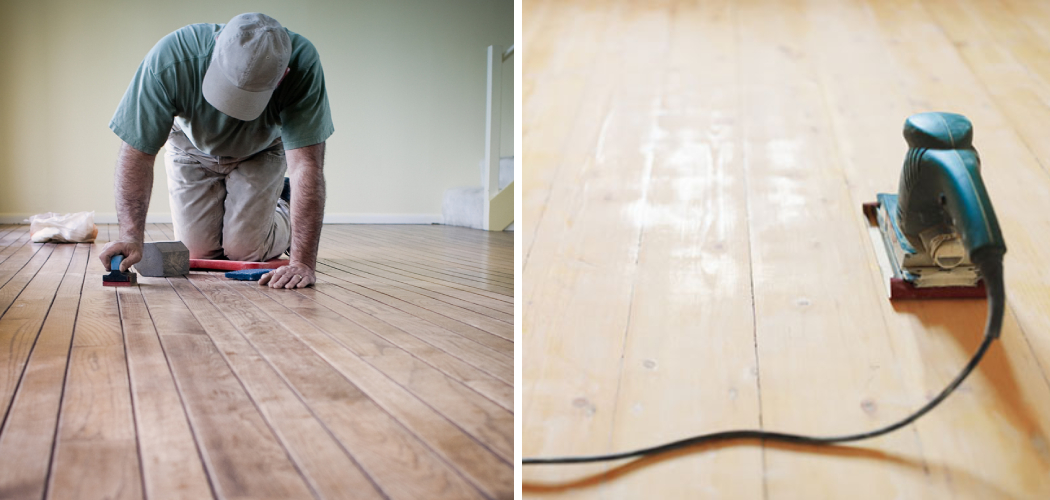Refinishing your distressed hardwood floors can bring a new look to any room. Not only that, but refinishing will also help protect the floor from further wear and tear and prevent dust buildup. It can also make it easier for you to clean your floors in the future.
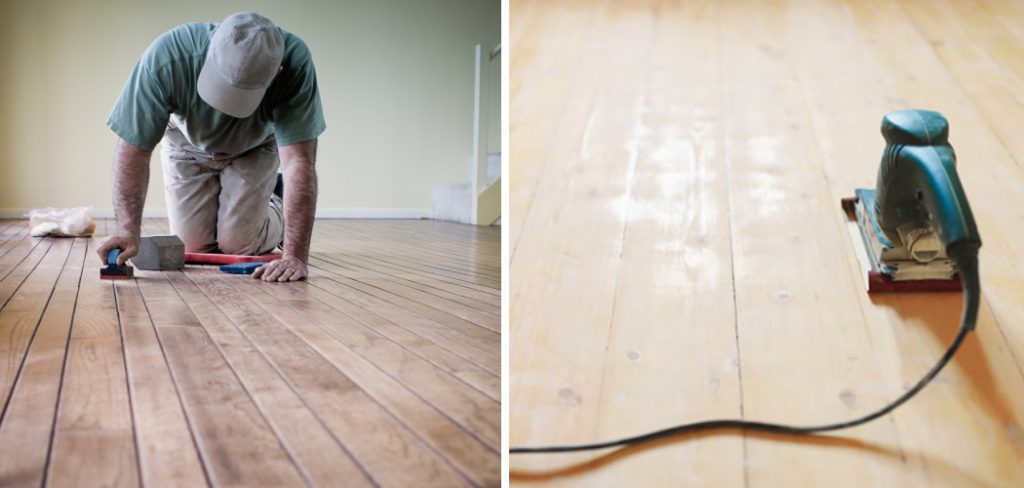
Refinishing distressed hardwood floors has many advantages over other flooring options. First, it adds a unique character and charm to any space that cannot be achieved with other types of flooring. It also provides an affordable option for homeowners looking for a cost-effective way to update their home’s interior design. In this blog post, You will learn how to refinish distressed hardwood floors.
Step-by-Step Processes for How to Refinish Distressed Hardwood Floors
Step 1: Inspect Your Hardwood Floors
Carefully inspect your floors for any damage or existing problems affecting the refinishing process. Check for signs of rot, water damage, and other structural issues that could require repairs before you start. Remove all furniture from the room to give yourself plenty of space to work with. If a lot of debris or dust accumulates, use a vacuum to clean and prepare the floor for sanding.
Step 2: Sand the Floor
Using an electric sander, slowly sand down the existing finish on your hardwood floors. Be sure to work in small circular motions and keep track of how many times you’ve gone over each area so that you can be consistent throughout. Once you’ve finished sanding, use the vacuum to remove excess dust and dirt. Be sure to get into those hard-to-reach areas with a handheld vacuum or brush attachment.
Step 3: Apply Stripper
Using either an oil-based or water-based stripping solution, apply the stripper to your floors with a paintbrush or roller. Be sure to read and follow the instructions on the package before doing so. Allow the stripper to dry completely, which can take up to 24 hours, depending on the product and humidity levels inside your home.
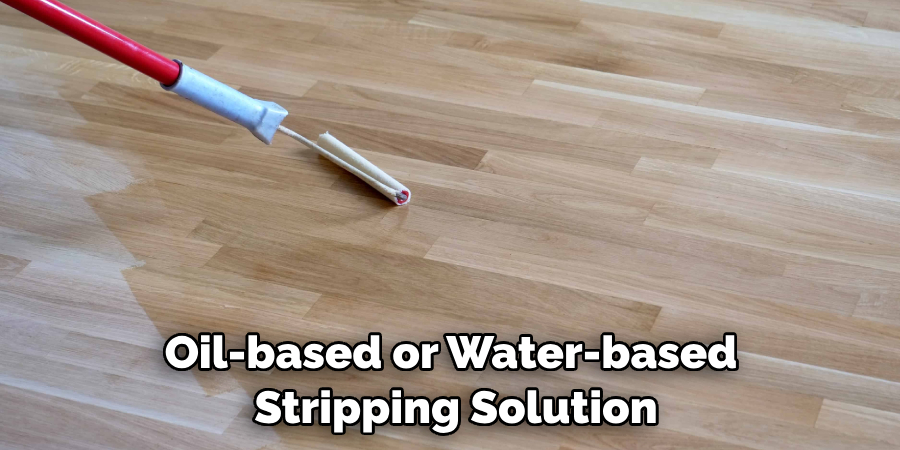
Step 4: Re-Sand
After allowing for adequate drying time, lightly sand your hardwood floors again to remove any remaining residue from the stripping process. Apply a polyurethane finish with a paintbrush or roller for added protection. Follow the instructions on the package and allow for adequate drying time before continuing.
Step 5: Buff the Floor
Using a buffing machine, gently go over the entire floor to smooth out any imperfections in the finish. Finally, mop the floors with a hardwood cleaner to remove any remaining dirt and dust particles. These steps should help you successfully refinish your distressed hardwood floors.
By following these steps, you can quickly and easily learn to refinish distressed hardwood floors easily. With patience and attention to detail, you’ll be able to create beautiful, finished floors that will last for years to come.
Safety Tips for How to Refinish Distressed Hardwood Floors
- Be sure to wear protective clothing, goggles, and a respirator mask when refinishing distressed hardwood floors, as particles can fly up into the air while sanding or staining the wood.
- It’s important to clear out any furniture from the room before beginning the refinishing process. Rugs should also be removed as dust will gather underneath them and cause staining on the wood.
- If there are any scratches or dents in the distressed hardwood floors, make sure to pre-treat them before beginning the refinishing process. This can be done by lightly sanding the area and filling any gaps with wood putty.
- Use a power sander to remove any existing surface of the floorboards while also evening out the texture. After sanding, vacuum up all the dust accumulating on top of the wood.
- After sanding, it’s important to apply the finish evenly and ensure that all areas of the distressed hardwood floors are covered. This will help avoid any discoloration or unevenness when it comes to staining.
- Before applying a sealant, check the distressed hardwood floors for moisture. If there is excess moisture in the wood, make sure to dry it out before continuing the refinishing process.
- After finishing the refinishing process, make sure to clean up all debris and tools that were used in the room. This will help ensure a safe and successful refinishing job.
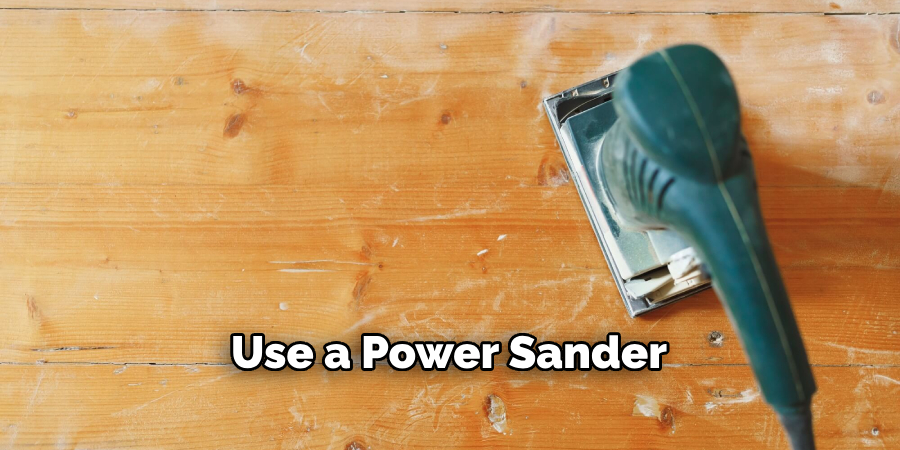
Following these safety tips can ensure a successful and safe refinishing job of distressed hardwood floors. These steps can help ensure your project goes smoothly and results in beautifully finished floors.
Is It Possible to Refinish Distressed Hardwood Floors Without Professional Help?
Yes, refinishing distressed hardwood floors is possible without professional help. However, it is a difficult task that requires patience and careful attention to detail to achieve the best results. The process begins with sanding down the floor using either an electric floor sander or by hand with a sandpaper block.
This will remove any scratches, dents, and other imperfections. Next, you should apply a wood sealer to protect the floor from water damage and other contaminants.
Once the sealer has dried, it is time to apply a new coat of finish to give the floor an updated look. You may want to consider using oil- or water-based polyurethane for the best results. When applying the finish, it is important to use even strokes and not miss any spots. After the finish has been applied, you should let it dry completely before adding a top coat of wax or polyurethane sealer.
What Type of Maintenance is Necessary After Refinishing Distressed Hardwood Floors?
Once you’ve refinished your distressed hardwood floors, giving them proper maintenance and care is important to ensure they look their best and last longer. A good quality hardwood floor finish will provide a protective layer against wear and tear from everyday use. Regular sweeping or vacuuming of the floors is necessary to remove dirt, dust, pet hair, and other debris that can damage the finish.
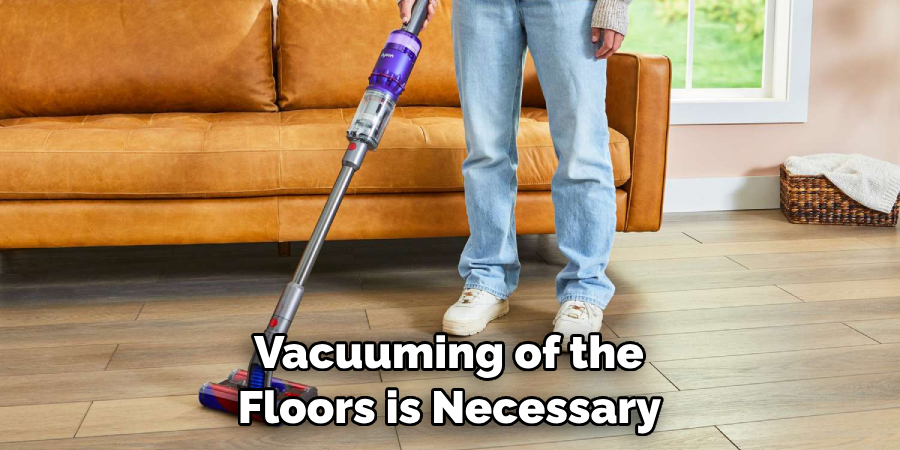
Mopping regularly with a mild cleanser and warm water will help keep your distressed hardwood floors looking new. Choose a cleaner specifically made for wood floors, as regular household or commercial cleaners can actually damage the finish.
A damp mop should be used to avoid puddles of water on the floor, as this can lead to warping and staining. For extra protection, it’s a good idea to apply a hardwood floor polish every few months or as needed.
How Often Should Distressed Hardwood Floors Be Refinished?
When it comes to refinishing distressed hardwood floors, the frequency will vary depending on the amount of traffic in your home. Generally speaking, floors that experience moderate to high levels of foot traffic should be refinished every three to five years. However, if your floor sees a lot less activity, you may be able to wait up to seven years before refinishing is necessary.
In addition to traffic levels, the type of finish used will influence the frequency of refinishing. If you have an oil-based finish applied to your floors, it must be refinished more often than a polyurethane or acrylic finish. Additionally, wax finishes should be re-waxed every few months and stripped and re-applied yearly.
If you’re unsure how often you should refinish your hardwood floors, contact a professional flooring specialist for an assessment. They can recommend the best approach to restore distressed hardwood floors and help you determine the proper frequency of refinishing.
What is the Best Method for Protecting Distressed Hardwood Floors After They Have Been Refinished?
Once you have refinished a distressed hardwood floor, it is essential to use the best method for protecting the newly finished surface. The most important thing to remember when protecting a newly refinished hardwood floor is that waxing or polyurethane coating is not recommended on distressed floors.
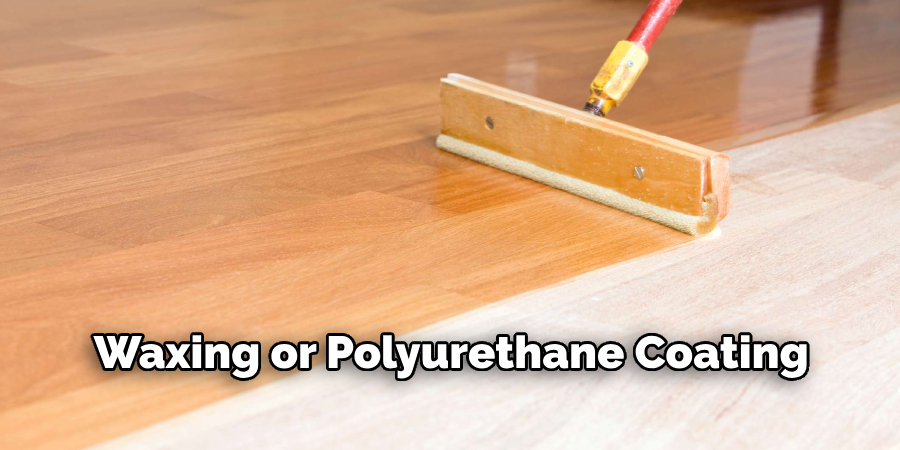
Distressed floors require special care, and this cannot be provided through waxing or polyurethane coating. Instead, there are a few steps you can take to protect your newly refinished distressed hardwood floors properly:
- First and foremost, keep the floor clean. This means using a mop or soft cloth to pick up dirt and debris daily as well as performing regular vacuuming (without the beater bar) as needed.
- When mopping the floor, use a damp mop and mild detergent designed to clean hardwood floors. Avoid using water or soaps that contain oil or wax, as this can damage the finish of your distressed hardwood floors.
- Place area rugs or runners over these spots as necessary to protect high-traffic areas from becoming scratched and scuffed. In addition, it is important to use felt pads under any furniture moved across the floor to avoid further damage.
- For additional protection, apply a coat of protective sealer every few years to keep your distressed hardwood floors looking like new. Be sure to choose one specifically designed for hardwood floors and follow the manufacturer’s instructions for application.
By following these steps, you can be sure that your newly refinished distressed hardwood floors will look great for years.
Conclusion
In conclusion, refinishing distressed hardwood floors may seem daunting, but with the right materials and tools, it can be done relatively easily. With the help of sanders, primers, sealants, stains, and finishes, you can make your old floors look new again. To ensure a successful job, choose the right color and finish to match your existing decor best.
With the proper steps, preparation, and techniques, you can restore your hardwood floors to their original beauty. I hope this article has been beneficial in learning how to refinish distressed hardwood floors. Make Sure the precautionary measures are followed chronologically.
